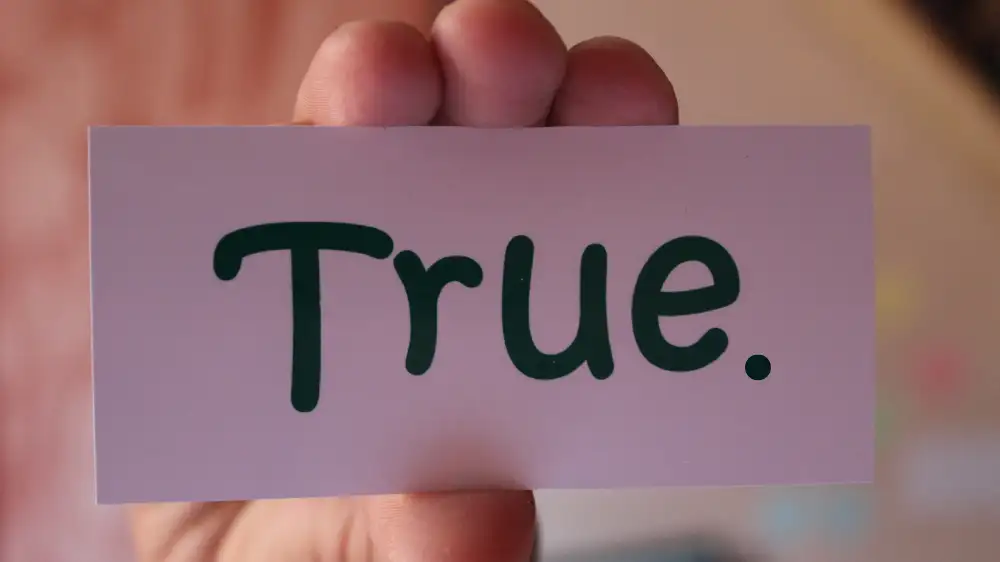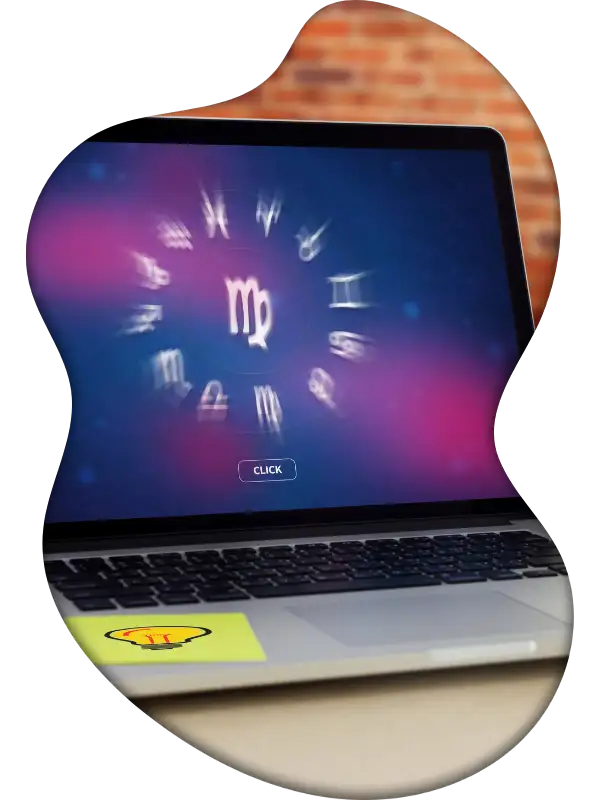A horary chart only sometimes contains an answer to the question asked. If the chart doesn't have information about the future, it's called non-radical.
Definition. A chart is radical if it contains information about future events. To be radical, a horary chart must satisfy several formal criteria.
We will mention ancient criteria for radicality for reference only - they have no practical value. The chart reflects the future under different, experimentally confirmed conditions [1].
[toc]
The Principle of Radicality
A horary chart shows an instantaneous "snapshot" of the querent's unconscious motives and the future events and circumstances to which these motives will ultimately lead.
It is important to remember that it is not the planets that determine future events but rather the individual with the micro-decisions he makes over an extended period. The planets only influence the individual's motives and, as a result, his micro choices. Ultimately, it sets a correlation between the position of the planets in the horary chart and future events.
What horary chart reflects
There is a direct connection between external circumstances (stimulus) and internal unconscious reactions. The more vivid the response of the querent to the external stimulus, the more precise picture of the future the chart shows.
Significant Situation Perceived by the Querent and Radicality of the Chart
If the situation that has arisen (external stimulus) is highly significant to the querent, then the reaction to the stimulus becomes noticeably palpable. In this case:
- The querent starts to experience the situation acutely and, most importantly, consciously.
- He becomes intensely interested in its future development.
Stimulus and the querent's reaction
In this case, the querent's internal intentions, reflected in the horary chart, fully correspond to the actual events (stimulus). That is, the indications of the chart coincide with reality. And in this case, we talk about the chart's radicality.
Significant Situation Unperceived by the Querent and Radicality of the Chart
Suppose the situation (external stimulus) is highly significant to the querent, but he cannot admit his feelings. In that case, he associates his excitement with some extraneous event unrelated to the cause. In this case:
- The querent begins to experience acute anxiety about the first situation that comes to mind.
- He becomes intensely interested in its future development.
- This situation in question is not related to the actual stimulus.
Reaction inadequate to the stimulus
For example, an adult man lives with his mother, who interferes with his personal life, and he feels irritation towards her and general anxiety. However, he cannot admit his feelings toward his mother or recognize the actual cause of his stress.
Then the man regularly associates his anxiety with potential external threats - the possibility of an accident, poisoning, becoming a victim of fraudsters, and so on.
He will often and vividly experience anxiety for each such situation. Still, it will not be related to the actual stimulus (the presence of his mother in his already adult life).
In such cases, the horary chart's indications and the querent's words will diverge. Two cases are possible:
- The chart will show the actual stimulus (the real cause of anxiety). In this case, we say that the horary chart is radical but "focused on another subject" or
- It will not show any internal motive. It happens if the cause of the querent's anxiety lies in the deep childhood and has no connection to the current external affairs. And in this case, the chart is not radical.
A Significant Situation That Lasts Long and Perceived by the Querent
Suppose the existing situation (external stimulus) is highly significant for the querent but lasts long. In that case, the querent develops a natural habit towards this stimulus.
The chart does not reflect the intensity of emotions.
The querent repeatedly turns to the astrologer with the same (emotionally charged, according to the querent) question, but the chart does not confirm the subject of his emotions. It is simply because the querent has become accustomed to the situation — it has become part of his everyday life and has lost its sharpness in the current moment.
We often call such questions decayed. The chart is non-radical in this case.
Insignificant Situation
Sometimes, the querent asks a question out of pure curiosity or prematurely, when the situation has not yet developed (for example, a girl worries about a future divorce with a boyfriend who does not yet exist).
The chart does not reflect any emotional concerns.
In this case, the chart does not show any correspondence between the querent's internal motives and the actual circumstances. That is, it is non-radical.
We often call such questions asked out of curiosity or immature (premature).
Criteria of Radicality
There are few techniques in the arsenal of the horary chart to show the motives of the querent.
Highlight by Reception
The reception shows what the querent is involved in and what occupies his thoughts and feelings.
Criteria #1. Planets that rule over the mind or heart of the querent by reception indicate what is important to the querent at the moment.
For example, if the ruler of the ASC is in Pisces and the Moon is in Gemini, they are "ruled" by Jupiter and Mercury by domicile and by Venus by exaltation. Therefore, houses ruled by Jupiter, Mercury, or Venus will indicate what is on the querent's mind.
The horary chart app makes these calculations on the fly.
Note. If the planet of the querent is close to the house cusp, it is almost always in the sign of the cusp.
It means that the querent's dispositor and the ruler of the house where the querent resides will coincide. Thus, the planet close to the cusp will always highlight this house by the reception. But on the other hand, the querent's position relative to the cuspid also emphasizes that house (according to criteria #2).
It means we consider the house twice (through the querent's dispositor and the location). Therefore, to exclude this duplication, we only consider reception, ignoring position, when the querent shares the same sign with the house cusp.
Position of the Querent's Planet in the House
There is an old rule. If a planet representing a person resides in a particular house, then it indicates a great interest of that person in the matters of that house. Specifically, regarding the querent:
Criteria #2. The house where the ruler of the ASC or the Moon locates will show the subject of great importance to the querent.
Position of Pars of Fortune
The Arabian Part of Fortune indicates the querent's deep desire.
Rule of Radicality #3. The house where the Part of Fortune falls, or the planet that disposits the Part of Fortune, will show the subject of great importance to the querent.
The horary chart app calculates the dispositor of Fortune (and the house it rules, if any) and the house where the Part of Fortune falls.
Conjunctions With Cusps
If the querent's planet bodily conjuncts another planet, then the querent is closely connected with a particular object. This object occupies an important place in the querent's life. This object may be important in the context of the question since the chart (i.e., the querent's subconscious) highlights it.
Radicality Rule #4. If the querent's planets or Pars of Fortune conjunct with another planet, then this planet becomes important for the querent and may be an important element in the context of the question.
We take into account:
- Bodily conjunction of the querent with other planets.
- Conjunction of the querent with planets by antiscia. In this case, we imply the querent may be hiding something from the astrologer or his surroundings.
- Combustion by the Sun. If the planet of the querent is combusted, it is "blinded" by the Sun and does not see anything except the Sun itself. Therefore, the Sun (and what it signifies in the chart) is essential to the querent.
- Bodily conjunction of Fortune with other planets. Since Fortune shows the deep motives of the querent, the connection of Fortune with the planets means an association of deep desire with a particular object.
Conjunctions With the House Cusps
If the querent's planet or Fortune conjuncts with the house cusp (this happens quite rarely), this indicates an extreme interest in the affairs of that house and is a separate sign of radicality.
Rule of Radicality #5. If the planets of the querent or Fortune fall on the house cusp (i.e., are in the same sign as the cusp and at a distance of no more than 3 degrees from it), this indicates a remarkable interest in the affairs of this house.
Planets (but not Fortune) can conjunct with the cusps bodily and by antiscia. The horary charts app takes it into account.
Additional (Factual) Signs of Radicality
If the chart confirms the circumstances the querent describes, this is an additional sign of radicality. For example:
- The querent claims that three days ago, he quarreled with his wife - and 3 degrees ago, there was an opposition between the Moon (querent) and the ruler of the 7th house (wife);
- The querent claims that two strangers broke into the house - and the chart shows that the ruler of the 7th house (thieves) is in a double sign;
- And so on - any direct correspondence will help in establishing radicality.
How Many Signs of Radicality Do We Expect to See?
Practice shows that we need to find at least two main criteria of radicality to confirm the deep concern of the querent. Then, of course, there can be as many additional signs as you like, but the more, the better.
The app for calculating and analyzing horary charts summarizes and determines the highlighted houses. In addition, for the convenience of the astrologer, it immediately highlights significant places with color.
The principal houses and planets in the question, calculated in this way, not only help establish the subject of the question but also select the necessary significators in non-obvious horary charts [2].
Ancient Signs of Radicality (For Reference)
In ancient books, you can find the following signs of chart radicality.
The Similarity of the Querent's Planet and the Ruler of the Hour
The ruler of the 1st house (querent) and the ruler of the hour should be:
- The same planet;
- Have the same elemental properties (dryness, heat, and so on);
- Optionally, the ruler of the hour is also the ruler of the elements of the ascending sign.
The following are signs of a non-radical chart:
Afflicted 7th House
A chart is considered non-radical if one of the following takes place:
- The 7th house or its lord has afflicted accidentally, and the question does not concern the 7th house matters;
- The ruler of the 7th house is essentially debilitated;
- The ruler of the 7th house in the term of Mars or Saturn;
- The ruler of the 7th house doesn't behold ASC;
- The 7th house ruler is in close square or opposition with the querent.
The logic here is that the 7th house always shows the astrologer (if the 7th house is not in question). And the affliction of the 7th house or an unfortunate aspect of the 1-7th house indicates an unsuccessful consultation outcome.
Afflicted First House
A chart is considered non-radical if one of the following takes place:
- The 1st house lord (querent) is in close conjunction with Saturn;
- Saturn afflicts the 1st house or its ruler
- The 1st house ruler is combusted.
The logic is this: once the querent is afflicted, he either tests the astrologer for knowledge or cannot perceive the astrologer's words. Therefore, such a chart cannot be taken into consideration.
For some reason, astrologers did not consider the options that the querent might feel bad, be in a difficult situation (in conjunction with Saturn), or be in a love relationship with a man (in conjunction with the Sun).
Early or Late ASC
A chart is considered non-radical if:
The ASC is in the first 3 degrees of the sign and, at the same time:
- The situation has been taking place for some time, or
- Querent is not a young man, or
- The querent has no characteristic facial markings corresponding to the ascending degree.
ASC falls in the last 3 degrees of the sign and, at the same time:
- Querent is not old, or
- The situation is not yet at the threshold of the resolution, or
- The querent is not at the end of the road or on the threshold of his home.
The logic here is this - in ancient times, when there were no accurate calculation tools, +/- 3 degrees to the border of the sign gave a zone of complete uncertainty - it was not completely clear which sign ascends. Therefore, there was a high probability of error.
As you can see, the ancients were looking for correspondences between the signs of the chart and the words of the querent (for example, the beginning of the rising sign and the very beginning of the emerging situation). And only when they saw such a correspondence they received confidence in what kind of sign ascends. Therefore, we can attribute it to the factual signs of radicality in our classification.
The Position of the Moon
A chart is considered non-radical if:
- The Moon is on via combusta, and the chart is not about a disaster, the querent is not in a state of panic, or the querent does not have burns, cuts, and scars;
- The Moon is without a course and not in the dignity of Venus or Jupiter;
- The Moon has just entered or exited a sign.
As you can see, astrologers here also looked for correspondence between reality and the testimony of the chart. For example, the Moon on a burned path and, simultaneously, a querent in a state of emotional turbulence is a correspondence between the testimony of the chart and reality. We can attribute it to the factual signs of radicality in our classification.
References
- Ragovik K. How to improve the accuracy of predictions in horary astrology. Report with the results of testing new techniques for determining radicality at the V astrological conference of the Moscow Academy of Astrology
- Non-obvious (in terms of the selection of significators) horary chart Will I get a registration?


